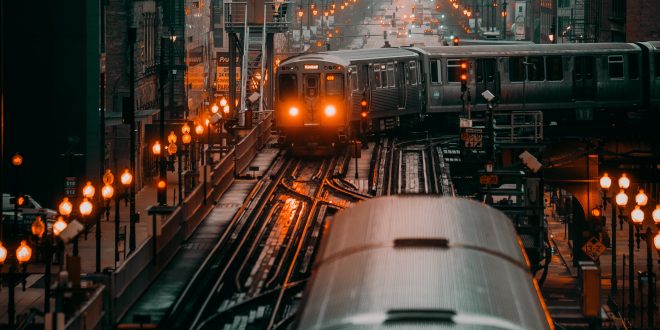The transportation industry is the leading source of CO2 emissions in the United States.
Improving sustainability standards within the transportation industry involves significant adjustments in how communities move around, how products and goods are shipped and how future transportation routes are designed.
Increasing the efficiency of movement in the transportation industry is the ultimate goal, which will also reduce emissions and increase public awareness of sustainability issues.
Sustainability in transportation includes constructing greenways to engage communities with their local environment, implementing alternative sources of transport and advancing shipping efficiency, especially in freighting and trucking. Here are 10 ways to make transportation greener:
1. Improve Freight Efficiency
Transportation sustainability depends on improving freight efficiency within supply chains. Increased consumption levels on the individual level and a more globalized economy have resulted in intricate distribution routes. For instance, a single product may be transported by plane, boat, truck and rail before arriving at its final destination.
2. Increase Public Transportation
In 2010, energy waste caused by traffic in the United States accounted for $87.2 billion a year — now imagine that number today. While public transportation may be easily accessible in urban areas, such as New York City, many rural communities find themselves limited regarding public transit. Optimizing how people get to work every day will be key in making transit more sustainable.
3. Enhance Electric Vehicle Infrastructure
Expanding infrastructure for charging electric vehicles will be vital as more consumers invest in EVs. The current rate of production for electric cars is outpacing the construction of charging stations, limiting consumers in how much they utilize this new technology. If companies increase the locations of charging stations, they can support and encourage investment in electric automobiles.
4. Utilize Green Construction
Using green materials is going to be a trend in the construction industry. Green construction includes the use of recycled materials, more efficient waste management and alternative design strategies, such as green concrete. The U.S. Green Building Council offers specific guidelines on how to reduce energy usage and environmental impact in transportation.
5. Maximize Smart Growth
Rampant development in the transportation sector creates unsustainable systems heavily dominated by vehicle use. Entire neighborhoods are designed around the automobile, making alternative transportation options to grocery stores or businesses nearly impossible. According to the EPA, integrating transportation options that increase the ways people move around will be a necessity in reducing greenhouse gas emissions and improving the overall quality of life.
6. Advance Truck Routes
Modern highway designs lag in terms of accommodating trucks that transport most of our products and goods. Many highway corridors see high amounts of truck congestion, and routes can be extremely inefficient. This traffic is especially concerning when considering how much waste trucks transport daily.
7. Integrate Land Use
Land use and transportation require considerable strategic planning. Increasing land accessibility will improve the efficiency of transportation networks. Practical land-use strategies include transit-oriented development and sustainable street design. Land-use policies enhance communities, protect the environment and support local economies.
8. Promote Green Highways
Many states promote a model known as the Green Highways Partnership, which is a voluntary program sponsored by the Green Highway Forum. The initiative includes using permeable construction materials to prevent toxic environmental runoff, incorporating native plant species and increasing volunteer participation in highway management, as opposed to regulated support.
9. Support Bike-Friendly Communities
In some parts of the world, like the Netherlands, cycling is the main transportation style. Urban areas integrate cycling traffic with vehicle traffic, and transportation design accounts for both modes of transport. Bicycling is a much more sustainable travel method than single-passenger cars and has a significantly lighter carbon footprint. Supporting the construction of bike-friendly routes and improving policies around bike safety are integral factors in bolstering biking communities.
10. Build Greenways
By definition, a greenway is a land corridor that connects communities with their environment. This stretch of land may run through an unpaved or paved route along a stream or a walkable path through a crowded city. Some benefits of greenways include improving pedestrian transportation, protecting local ecosystems and promoting healthy living.
Moving Toward Sustainability
The solution to a more sustainable transportation industry is not necessarily less movement or limits on growth. Instead, the sector should focus on increasing efficiency, from daily commutes to the shipment of manufactured goods.
Upgrading transportation options, including biking and pedestrian walkways, will also influence how future communities are designed. Effectively reducing the transportation sector’s carbon footprint will require changes to developmental policies, land use planning and community initiatives.



